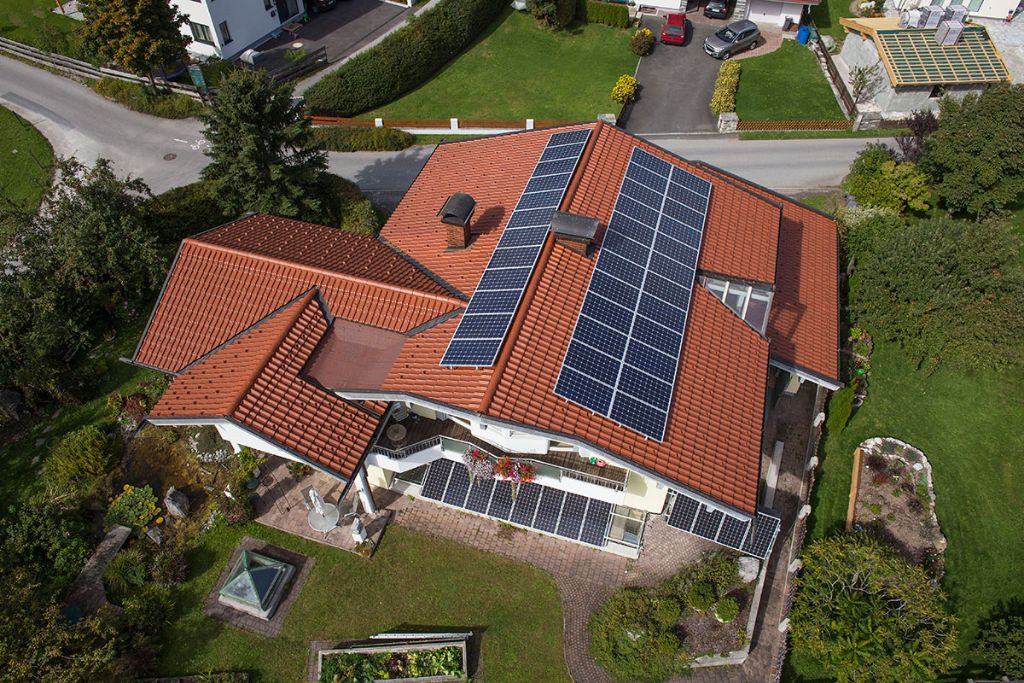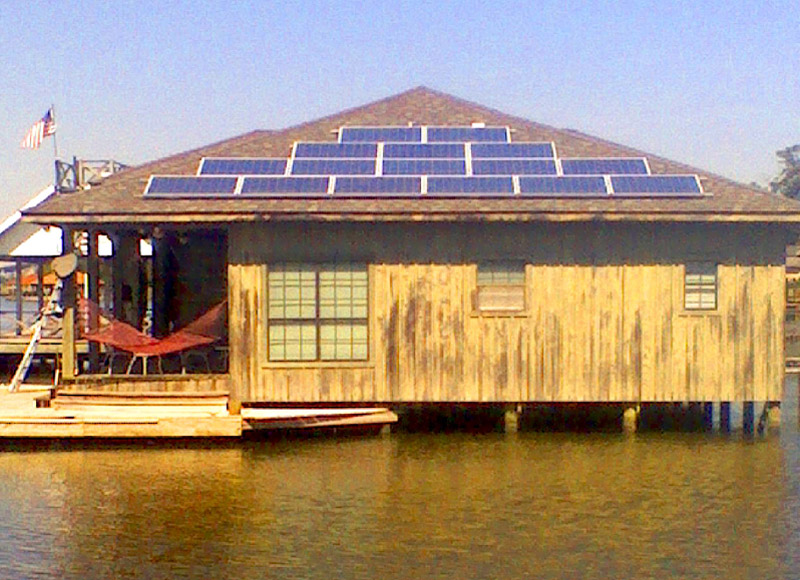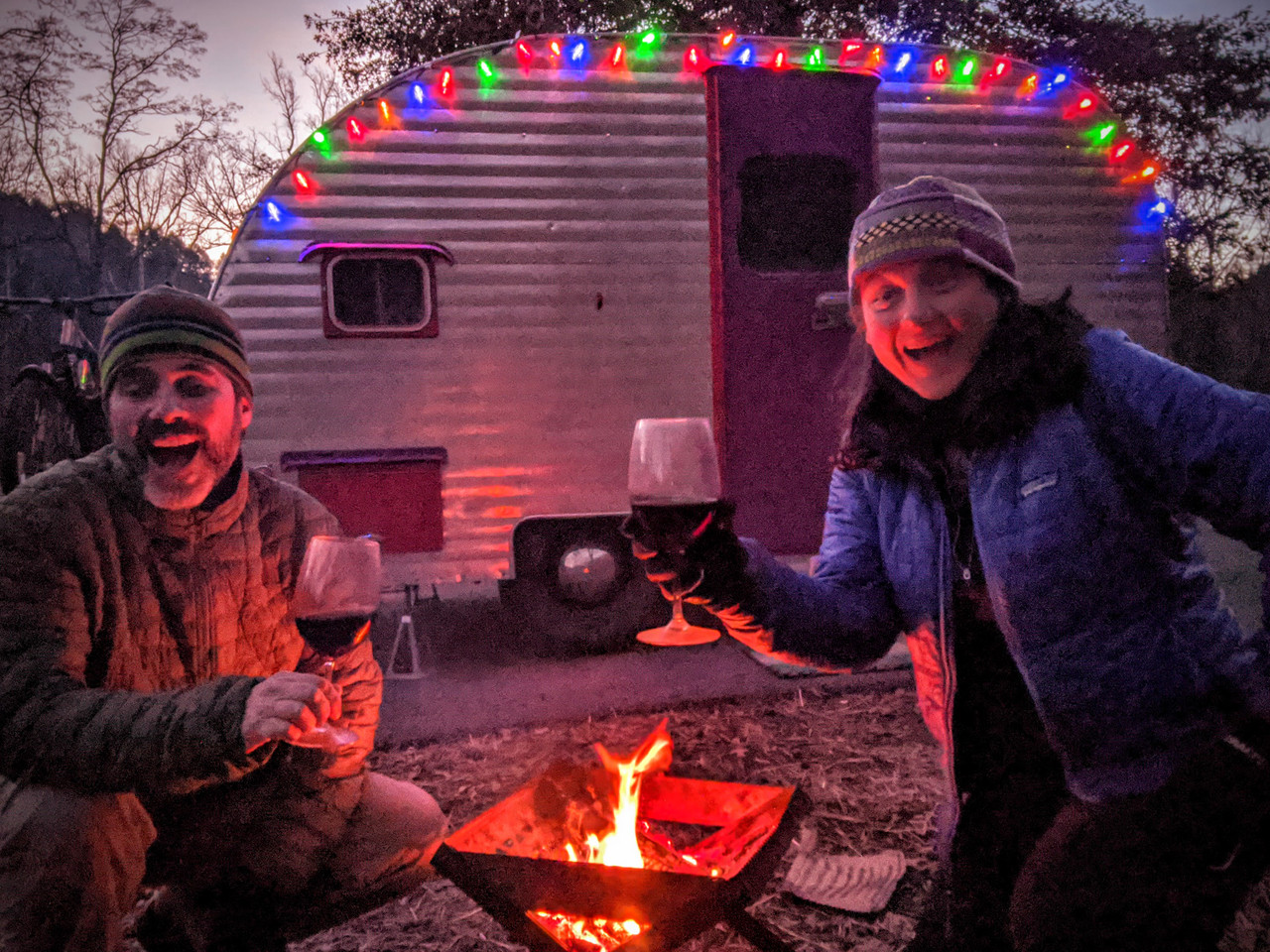Installing Solar Panels on a Tiny Home
The tiny home movement is well underway, and it’s showing no signs of slowing down. With more and more homeowners deciding to take the plunge and simplify their living situations, there’s a growing interest in learning more about installing solar on a tiny home. Because tiny homes are so energy efficient, installing solar panel systems can bring a big return on your investment.

The Benefit of Installing Solar on a Tiny Home
For most homeowners, the benefits of solar on a tiny home are similar to those you’d find with any other building. First, solar electricity is an environmentally friendly way to generate energy. Second, you’ll save money compared to traditional electrical sources. And finally, you’ll get energy independence since you won’t rely on the electrical grid system.
However, solar on a tiny home has one additional advantage: mobility. Because many tiny homes are mobile, having a portable solar power system lets you set up anywhere you can catch some sunshine, giving you ultimate energy freedom.
Powering Your Tiny Home
One of the first questions you should ask when considering installing solar on a tiny home is just how much energy you need to generate to meet your demands. This depends on how you’re using that power. Take a moment and think about what applicants and devices in your home use power. Common examples include:
- TVs and game consoles
- Laptops, tablets, and phones
- Appliances
- Heat & AC
- Lighting
While your tiny home will likely use far less energy than a larger home, you’ll still need to make sure you have enough power, which you can do with this solar panel calculator. This will help you determine just how many solar panels you’ll need to keep your home running.
Of course, you can also make some adjustments to reflect your electricity needs. You might install a propane heater, for instance, or a gas range. You should also consider using only LED lights, which use far less energy than incandescent lights. You’ll also want to install a battery bank so you can use the power you generated during periods when the sun isn’t out.
How to Build a Solar Power System for Your Tiny Home
The perfect time to determine how to best incorporate solar on a tiny home is at the beginning of your construction process. That way, you can incorporate the equipment into your initial design, making sure you have the room you need for the equipment. Of course, with the ease of solar panel kits, it’s easier than ever to add solar panels to your home even long after it’s built.
When you’re designing your solar power system for your tiny home, you’ll need the following components:
Solar Panels
Solar panels actually convert sunlight into usable energy. These panels are available either as solar panels mounted on the roof or as ground-mounted units. While roof units are more convenient than ground-mounted units overall, your roof needs to be able to support the weight. Ground-mounted panels, on the other hand, require more equipment but can be placed and moved throughout the day to capture the most sunlight possible.
Solar Batteries
In order to have power during the hours when the sun isn’t out, you’ll need an array of batteries to store the power you generate during the day. These batteries make sure none of the power you create goes to waste while ensuring you have energy available when you need it.
Solar Charge Controller
A solar charge controller is an essential component of every solar power system. This unit helps ensure you don’t overcharge your batteries, leading to damage or explosions.
Inverter
The energy stored in your batteries is kept in direct current, or DC. However, the electricity that you need to power your home is AC, or alternating current. An inverter changes your DC power to AC, allowing you to access your stored power safely.
Sunlight
However, this is just the bare equipment you’ll need to install solar on a tiny home. You also need to make sure that your panels will receive enough sunlight to generate sufficient power, whether you choose roof or ground-mounted panels.
Solar Panel Installation
Once you decide on the design of your solar panel system, the next step is installation. While you may want to hire the help of a solar professional for large projects, installing solar on a tiny home can usually be done by the homeowner.
With easy-to-use solar panel kits, you should have all the equipment you need to get your system up and running. Once you decide how many panels you’ll need, you can decide if it’s better to install them on the roof or on a ground-mounted unit.
If you’re building a tiny home on wheels, one consideration to keep in mind is the wind. As you drive, your solar panels will be exposed to wind speeds that could potentially detach your panels. This would damage your roof, as well. Be sure to choose panels that will stand up to those high winds.
As you install your solar panels, you’ll need to consider one other option: whether to wire them together in parallel or series circuits. In parallel circuiting, all of the positive terminals are connected to each other, as are all the negative terminals. This method provides higher amps as well as back-up in case one of the panels malfunctions.
On the other hand, series writing connects the negative terminal of each panel to the positive terminal on the panel next to it, which increases the voltage without losing efficiency during transmission. However, if a panel goes out, the entire circuit stops working.

Take Control of Your Power
For many owners of tiny homes, their true joy comes from the inherent independence and simplicity of the tiny home. With solar on a tiny home, you’ll have the energy independence you crave without having to answer to a large, faceless utility company. Plus, you can feel good about generating green energy.
Like tiny homes, solar power is about sustainability, and with the proper solar set-up on your tiny home, you’ll have all the energy you need.







